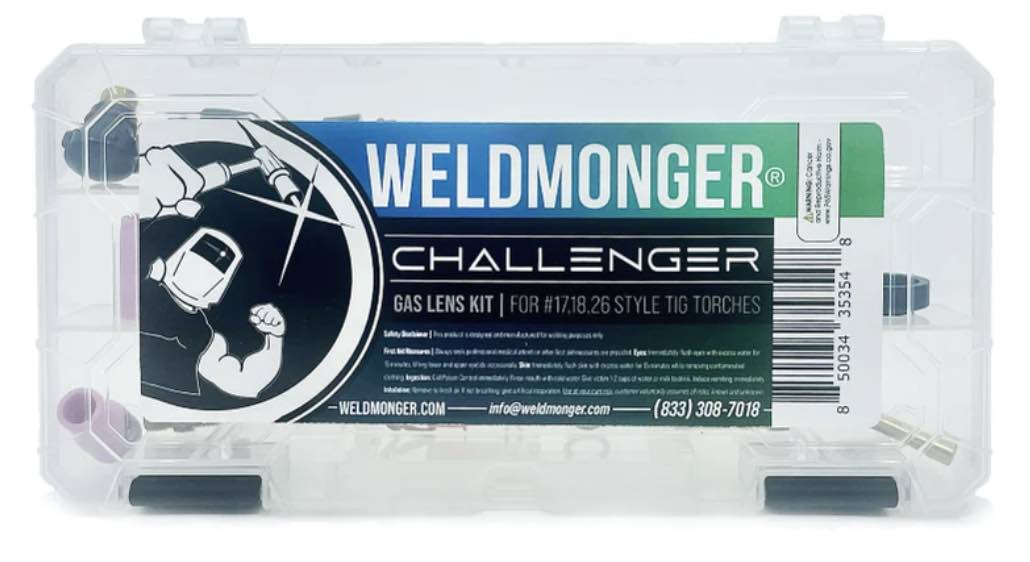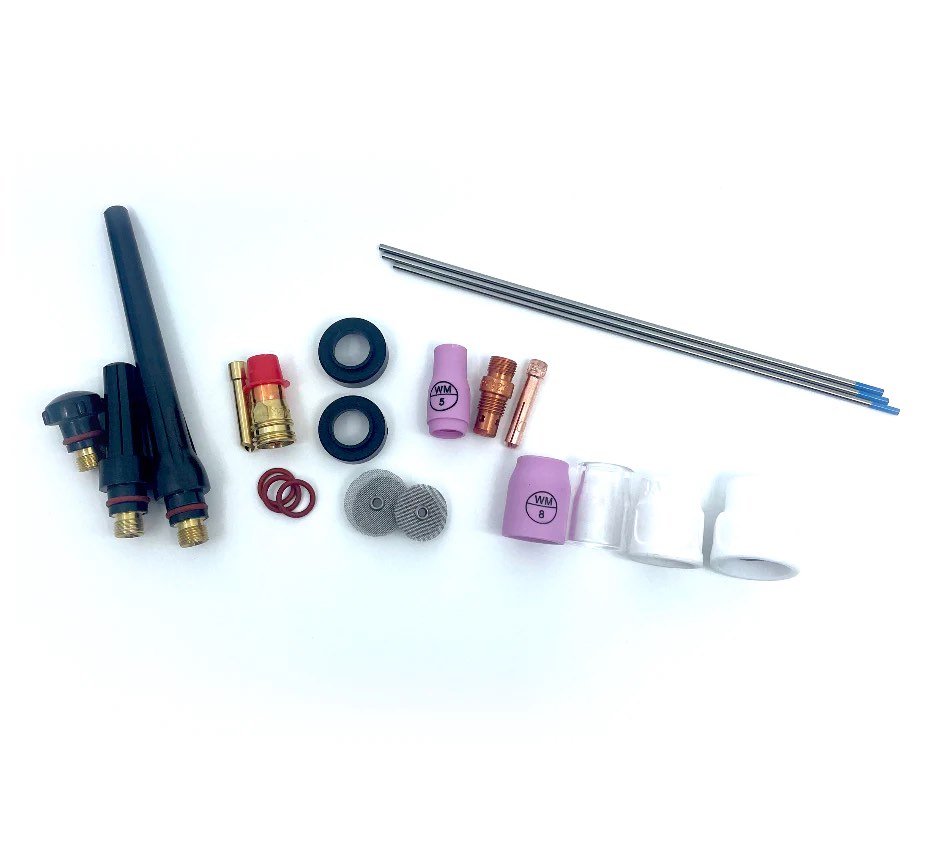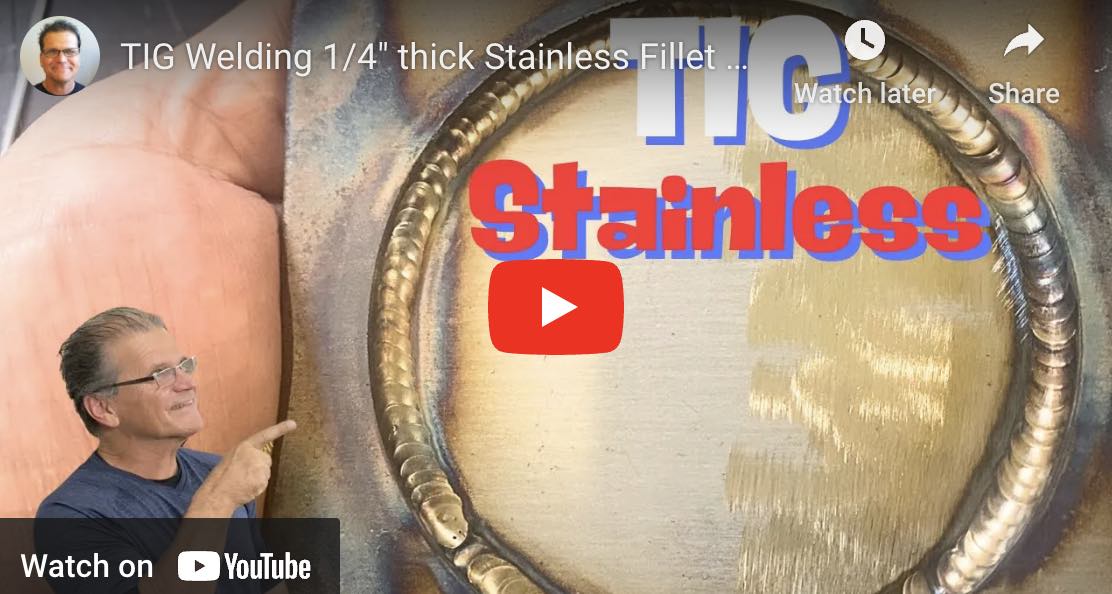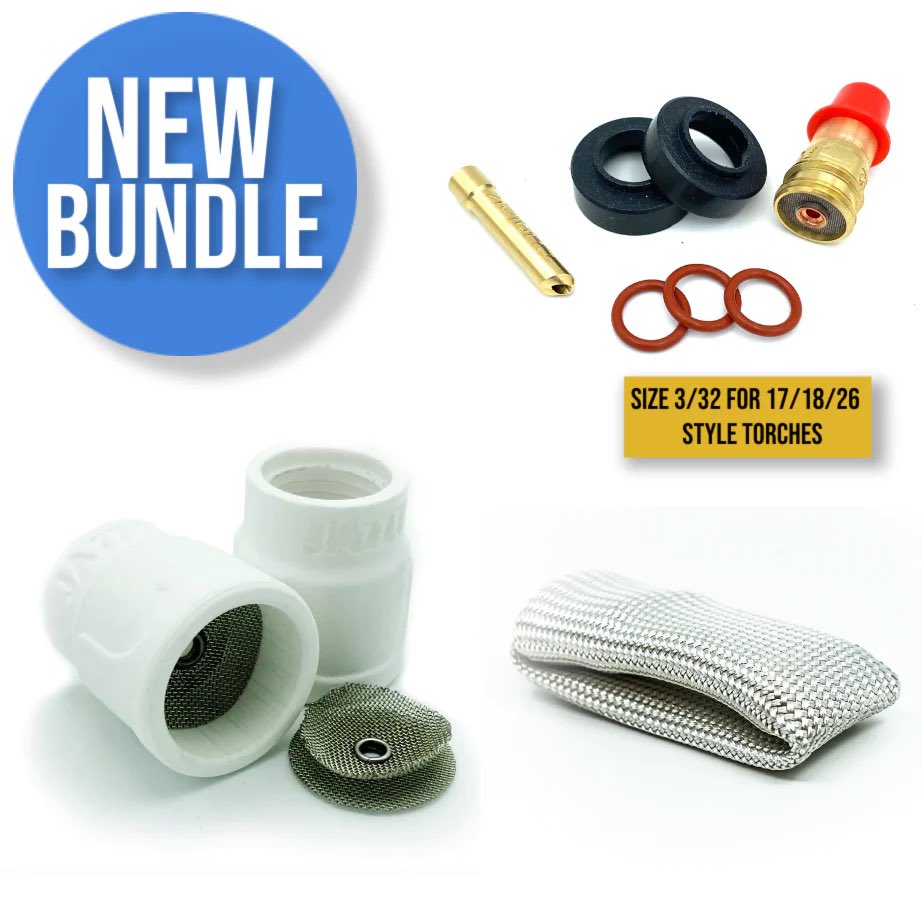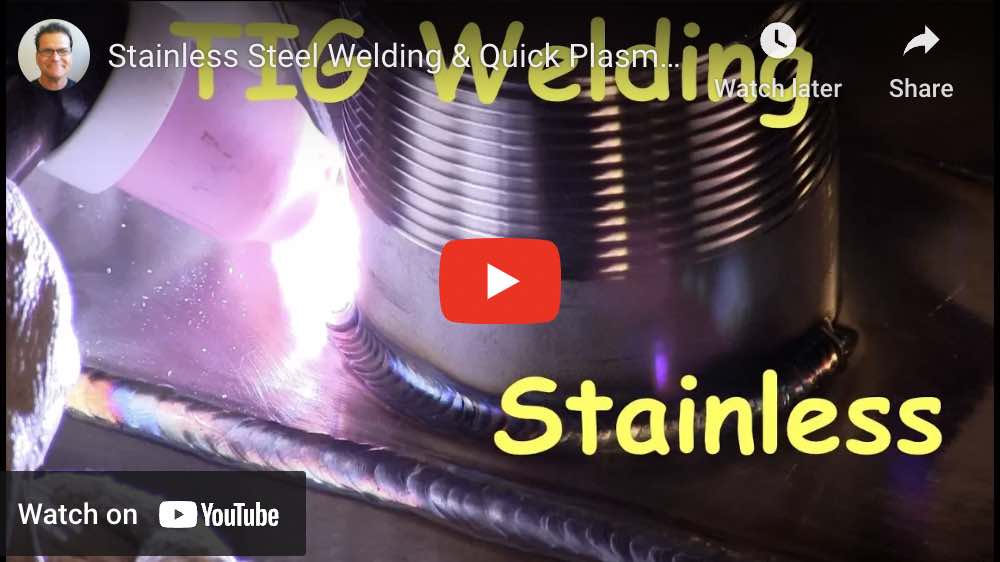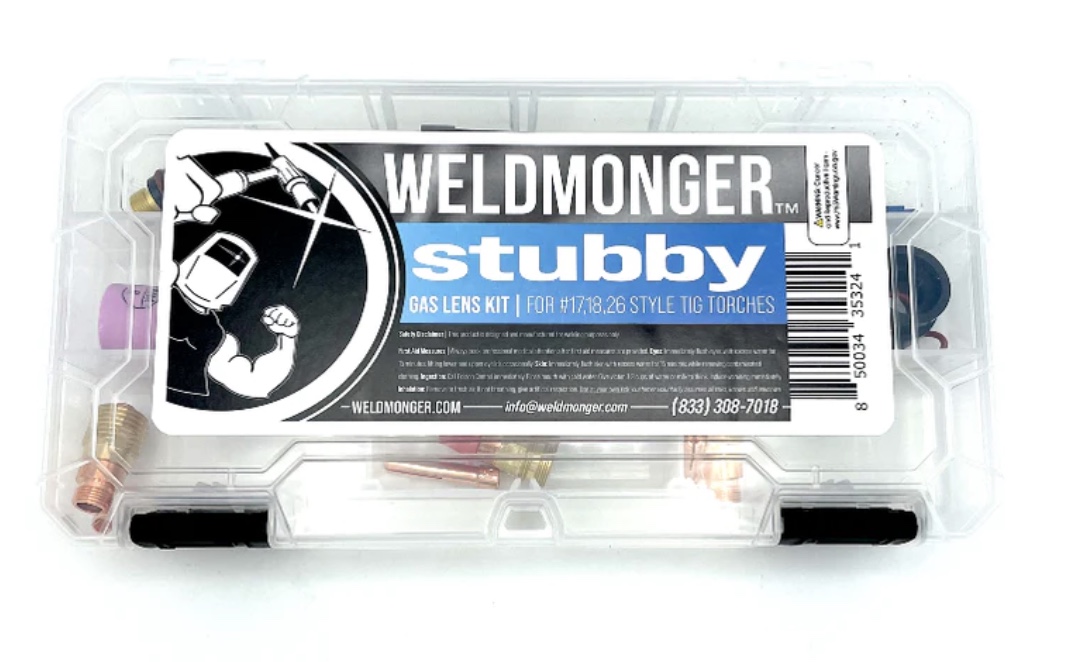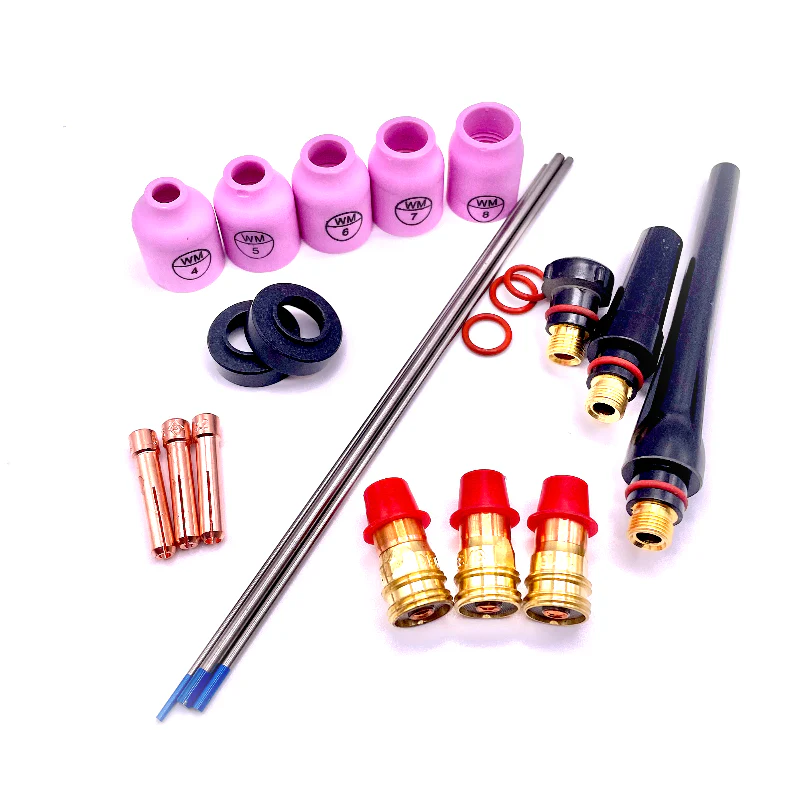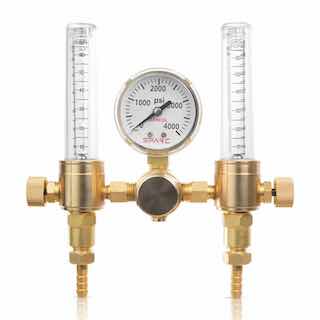Stainless TIG
Gas Tungsten Arc Welding of Stainless Steels
...Introducing the New WeldMonger Challenger TIG kit that includes the most frequently used Cups.
- HOME
- Tig Welding Stainless
- Tig Welding Stainless Steel
- Stainless Tig
### Stainless TIG Welding: The Importance of Limiting Heat Input and Utilizing Proper Tools
Stainless TIG welding differs a little bit from TIG welding carbon steels.
Mainly because one of the main goals when welding stainless steels is to maintain the stainless properties.
Using poor welding and cleaning techniques can mess up the stainless properties so this article explains some of the main things you can do to keep stainless steel stainless.
#### Limiting Heat Input to Avoid Carbide Precipitation
**Carbide Precipitation**:
Carbide precipitation occurs when chromium carbides form at the grain boundaries of stainless steel during welding. This phenomenon typically happens at temperatures between 800°F and 1600°F. The formation of these carbides depletes chromium in the weld area, which is essential for the corrosion resistance of stainless steel.
In simple terms, it boils down to keeping the stainless steel too hot for too long.
**Consequences**:
- **Reduced Corrosion Resistance**: Depleted chromium leads to the loss of the protective chromium oxide layer, making the weld area more susceptible to corrosion.
- **Intergranular Corrosion**: The weld may suffer from intergranular corrosion, where corrosion occurs along the grain boundaries, compromising the structural integrity.
**Strategies to Limit Heat Input**:
Amperage is not the only factor in heat input. Travel speed is also very important.
In fact, a low amperage weld with slow travel speed can sometimes result in more heat input than one made with higher amperage and faster travel speed.
And just as important as travel speed is how quickly you get your puddle started and how quickly you can begin to move that puddle.
- **Pulsed Welding**: Pulsed TIG welding helps control heat input by alternating between high and low currents. This allows the weld area to cool slightly during the low current phase, which can reduce the overall heat input.
- **Intermittent Welding**: Allow the material to cool between weld passes. This method helps prevent the accumulation of excessive heat in any one area.
When making a multiple pass weld, allowing to cool between passes helps reduce the risk of carbide precipitation.
#### Benefits of Using a Gas Lens
A **gas lens** is also called a gas lens collet body and it has diffuser screens much like a water faucet.
The diffuser screens help with a non turbulent flow and provide a larger argon shielding envelope over the weld area.
Specialty cups with additional diffuser screens help even more when a longer tungsten extension is needed to reach tight areas.
#### Using Stainless Steel Wire Brushes
**stainless steel wire brushes only** should be used for removing heat tint oxides between passes or after the weld is finished. Dont use carbon steel brushes or any brush that has been used on carbon steel.
**Reasons**:
- **Avoiding Cross-Contamination**: Brushes made of carbon steel or other metals can leave particles on the stainless steel surface, leading to contamination. This contamination can cause rust and other corrosion issues, even on stainless steel.
- **Maintaining Corrosion Resistance**: Stainless steel wire brushes are designed to clean stainless steel without leaving behind residues that could affect the material's corrosion resistance.
### Conclusion
TIG welding stainless steel requires meticulous attention to detail, especially in managing heat input and using the proper tools. By limiting heat input, welders can avoid carbide precipitation, maintaining the corrosion resistance and structural integrity of the stainless steel. Utilizing gas lenses and stainless steel wire brushes further enhances weld quality by ensuring better gas coverage and preventing contamination. Mastery of these aspects is essential for achieving durable and aesthetically pleasing welds in stainless steel.
For more detailed information on TIG welding techniques and best practices, resources from [Miller Welds](https://www.millerwelds.com/resources/article-library/tig-welding-stainless-steel) and [Lincoln Electric](https://www.lincolnelectric.com/en-us/support/welding-how-to/Pages/tig-welding-detail.aspx) are highly recommended.
Other Stainless TIG videos covering other best practices like chill bars and back purging

